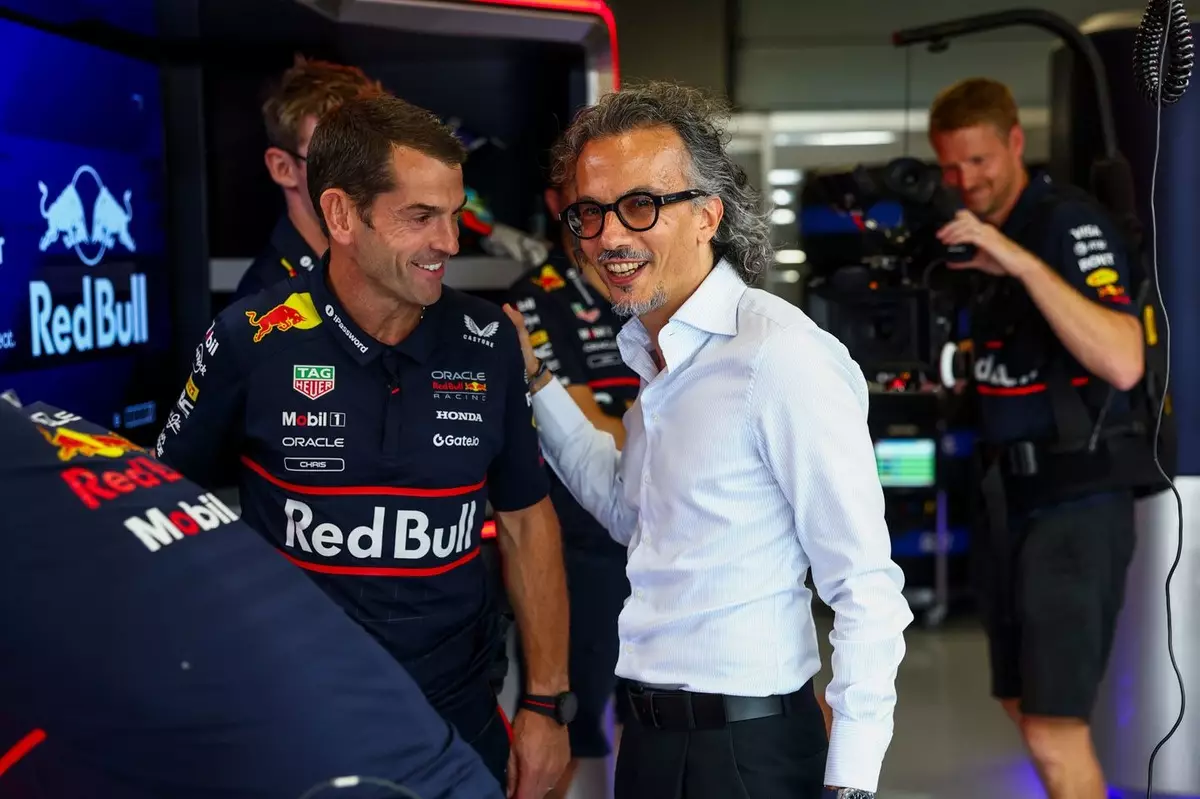The recent appointment of Laurent Mekies as the head of Red Bull Racing marks a pivotal moment in the team’s storied history. After over two decades of Christian Horner’s unwavering leadership, the shift reflects Red Bull’s readiness to evolve amidst fluctuating competitiveness and uncertain future prospects, particularly concerning Max Verstappen’s trajectory. This transition is not merely an administrative change; it embodies a strategic recalibration aimed at reasserting dominance in Formula 1. The decision underscores Red Bull’s recognition of the importance of seasoned leadership, especially as the team navigates complex technical and operational landscapes into the upcoming regulation cycles.
Horner’s tenure was characterized by remarkable achievements, transforming a modest Jaguar-derived team into a powerhouse with a formidable record of race wins and championships. Entrusting the reins to Mekies signifies a desire to blend stability with innovation. It’s a signaling move—an acknowledgment that to sustain racing excellence, Red Bull must embrace fresh perspectives, combined with the experienced managerial backbone that Mekies brings. This shift hints at the broader ambition to cement Red Bull’s influence not just as a constructor, but as a technological pioneer steering through the intricacies of tomorrow’s regulations.
Leadership with Depth: The Promise of Laurent Mekies
Laurent Mekies’s reputation as a talented leader within F1 accentuates his suitability for this demanding role. Known for his technical acumen and profound understanding of racing dynamics, he balances this with exceptional people skills—a vital trait in a sport where team cohesion and morale directly impact performance. His previous experience working alongside Permane at Racing Bulls provides a foundation of trust and familiarity, which is crucial during these transitional phases.
Permane’s praise underscores a critical aspect often overlooked: the importance of leadership personality in high-pressure environments. Mekies’s ability to relate to and motivate a diverse team of engineers, strategists, and drivers will be instrumental in revitalizing Red Bull’s competitive edge. Beyond technical prowess, his leadership style appears to foster collaboration, a prerequisite given the intricate matrix of partnerships spanning chassis, power units, and emerging technologies such as the in-house engine development program.
Moreover, Mekies’s history hints at an understanding of how to leverage organizational synergies—an element vital in a complex multi-department operation like Red Bull Racing. His prior collaborations with Christian Horner and the Racing Bulls team suggest that a smooth transition is not just plausible but likely, provided he can adapt his strategy to the evolving demands of the team and sport.
Building a Future: The Power of Continuity and Innovation
While the focus on leadership transition might suggest a period of upheaval, Permane’s insights hint at the contrary: a strategic continuity rooted in experience and shared vision. The ongoing collaboration between Racing Bulls and Red Bull Racing exemplifies this approach. The move to bring Racing Bulls’ components and power unit development in-house by 2026 signifies not just a technological upgrade but a statement of intent—Red Bull is positioning itself to be a fully self-reliant force capable of competing on every front.
This vertical integration project, set against the backdrop of the defining regulatory overhaul, highlights a broader philosophy. Red Bull’s investment in in-house powertrains and engineering prowess indicates a confidence that technological independence will translate into a competitive advantage. It’s a gamble, undoubtedly, but one grounded in the belief that innovation, when coupled with the right leadership, can redefine a team’s destiny.
Permane’s remarks about the collaboration, especially with Mekies’s prior experience working alongside key personnel, suggest optimism about maintaining operational harmony. This cohesion—crucial in a sport where minute advantages matter—is also about trust. Red Bull’s strategic alliances, both internally and with technical partners, are aligning to forge a resilient, forward-looking organization.
A Critical Reflection: The Challenges Loom Large
However, it would be naive to overlook the formidable hurdles ahead. The decline in recent competitiveness signals underlying issues—technical deficiencies, strategic missteps, or perhaps a misalignment of internal priorities. Mekies’s appointment, while promising, is a significant gamble; a new leader must swiftly impose a vision that reenergizes the squad and tackles the technical deficits.
Furthermore, the legacy of Horner’s leadership casts a long shadow. His ability to nurture talent, sustain motivation, and navigate complex political landscapes within F1 set a high bar. Mekies’s challenge lies in not only honoring that legacy but also in forging his own identity—a task that requires deftness and resilience. The multi-layered demands of managing a top-tier F1 team, coordinating with the engine division, and steering through regulatory transformations demand a multifaceted leader with clarity of vision and adaptability.
Red Bull’s latest leadership reshuffle is more than a change at the top; it symbolizes an aggressive pursuit of excellence amid high stakes. Success hinges on Mekies’s capacity to harness his experience, foster unified innovation, and execute a bold vision. For Red Bull, this is a critical juncture—one that will determine whether they reclaim their former dominance or falter in the face of mounting competition and technological complexity.


Leave a Reply